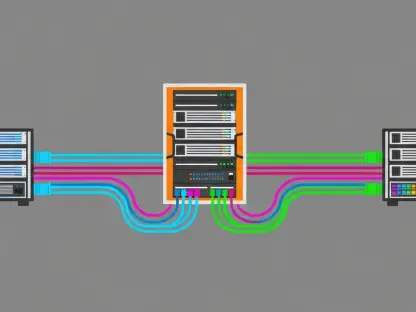The modern digital age presents new vulnerabilities that existing regulations fail to fully address. Since the inception of the Health Insurance Portability and Accountability Act (HIPAA) in 1996, healthcare data handling has fundamentally focused on ensuring patient confidentiality. However, with technological advancements and the increasing reliance on digital systems, the landscape of healthcare data security has become more complex and challenging. Recent legislative efforts, including the Healthcare Cybersecurity Act of 2024 and the Health Infrastructure Security and Accountability Act of 2024 (HISAA), signify a shift towards fortifying healthcare organizations against increasing cyber threats. These proposed laws aim to enhance current protections but face legislative delays and potential limitations if enacted.
Key Legislative Proposals
Healthcare Cybersecurity Act of 2024
This proposed bill endeavors to enhance collaboration and resource sharing between healthcare organizations and federal entities such as the Cybersecurity and Infrastructure Security Agency (CISA). It supports equipping healthcare providers with necessary cybersecurity tools, resources, and training. Standardized frameworks are aimed at ensuring consistent threat identification and mitigation across the healthcare sector. The act emphasizes the importance of a unified approach to cybersecurity, encouraging healthcare organizations to adopt best practices and share threat intelligence. By fostering a collaborative environment, the bill aims to create a more resilient healthcare infrastructure capable of withstanding sophisticated cyberattacks.
Moreover, the Healthcare Cybersecurity Act of 2024 seeks to address the specific needs of different healthcare providers, including hospitals, clinics, and smaller medical practices. By offering tailored resources and training, the bill ensures that all healthcare entities, regardless of size, can enhance their cybersecurity measures effectively. The act also promotes the development of industry-wide standards for cybersecurity practices, enabling healthcare organizations to stay ahead of emerging threats. This comprehensive approach is essential for creating a secure healthcare environment that can protect patient data in an increasingly digital world, ensuring that all stakeholders are well-prepared to face the evolving cyber threat landscape.
Health Infrastructure Security and Accountability Act of 2024 (HISAA)
HISAA focuses on improving the technical infrastructure of healthcare entities. It prioritizes funding for modernizing outdated systems and emphasizes accountability, holding organizations responsible for data breaches caused by preventable vulnerabilities. This proactive approach aims to encourage earlier risk management measures to prevent escalation. The act also highlights the need for continuous monitoring and assessment of healthcare systems to identify and address potential vulnerabilities. By implementing robust security measures and ensuring compliance with updated standards, HISAA seeks to create a more secure environment for patient data.
In addition, HISAA aims to establish a culture of accountability within healthcare organizations, encouraging them to prioritize cybersecurity and take ownership of their data protection practices. By providing financial incentives for healthcare entities that demonstrate strong cybersecurity measures, the act aims to promote best practices and drive continuous improvement across the industry. HISAA also emphasizes the importance of regular training and education for healthcare professionals, ensuring that they are aware of the latest threats and equipped to protect patient data effectively. This comprehensive approach aims to build a resilient healthcare infrastructure capable of withstanding cyberattacks and safeguarding sensitive patient information.
Non-traditional Health Data
Gap in Regulation
The article highlights a major oversight in current and proposed regulatory frameworks: Non-traditional health data. This data originates from consumer health technologies such as fitness trackers, mobile health apps, and telemedicine platforms. Such data often lacks stringent protections as enforced on data managed by traditional healthcare providers under HIPAA. Consumer health data stored by third-party tech companies usually escapes stringent regulatory oversight, making it a lucrative target for cyberattacks. Frequent breaches reflect the lack of basic protections, such as encryption—leaving sensitive data regarding activity levels, sleep patterns, and mental health metrics vulnerable.
Furthermore, the rapid adoption of new health technologies has outpaced the development of corresponding data protection regulations, creating significant gaps in the security landscape. Many consumers are unaware of the potential risks associated with sharing their health data through various digital platforms, further exacerbating the issue. As the market for consumer health devices and applications continues to expand, the urgency to address the regulatory shortcomings becomes more pronounced. Ensuring that non-traditional health data is subjected to the same rigorous security standards as traditional healthcare data is crucial for protecting individuals’ privacy and maintaining trust in digital health innovations.
Proposed Solutions
Policymakers are urged to extend existing healthcare privacy regulations to include consumer health data. This extension would guarantee that all health-related information meets rigorous privacy and security standards. Additional strategies include fostering partnerships between healthcare organizations and tech companies to establish clear data protection protocols and creating secure data-sharing frameworks. By implementing these measures, the healthcare sector can ensure that all health data, regardless of its source, is adequately protected against cyber threats. This comprehensive approach is essential for safeguarding patient information in an increasingly digital world.
Another key aspect of securing non-traditional health data involves raising awareness among consumers about the importance of data privacy and security. Educating individuals on best practices for managing their health information and choosing secure digital platforms can significantly reduce the risk of data breaches. In addition, policymakers should consider incentivizing technology companies to prioritize data protection features in their products, fostering a market environment where security is a top priority. By adopting these comprehensive strategies, the healthcare sector can create a more secure ecosystem for all types of health data, ensuring that patient information remains protected in the face of evolving cyber threats.
Strategic Leadership and HIPAA Updates
Role of CISOs
Chief Information Security Officers (CISOs) play a pivotal role in fortifying healthcare facilities’ cybersecurity frameworks, particularly in resource-constrained rural and low-income settings. HISAA funding can be strategically utilized to hire experienced cybersecurity staff and invest in key security infrastructure upgrades. Furthermore, CISOs are essential in leading education programs to train employees on recognizing threats and adhering to data protection protocols. CISOs also play a crucial role in developing and implementing comprehensive cybersecurity strategies tailored to the unique needs of their organizations. By leveraging their expertise, healthcare facilities can better protect patient data and respond effectively to emerging threats.
In addition to their technical expertise, CISOs serve as catalysts for a culture of cybersecurity within healthcare organizations. They bridge gaps between IT departments and executive leadership, ensuring that cybersecurity considerations are integrated into broader business strategies. CISOs are instrumental in fostering a proactive approach to cybersecurity, encouraging continuous improvement and adaptation to new threats. By leading regular risk assessments and threat simulations, they help organizations identify vulnerabilities and implement effective mitigation measures. The role of CISOs extends beyond immediate threat management, as they are key players in establishing long-term resilience and fostering a culture of security awareness throughout the healthcare workforce.
Information Sharing
Healthcare organizations benefit from collaborating with Information Sharing and Analysis Centers (ISACs) to exchange threat intelligence and understand best practices. This collaboration is essential for smaller facilities with limited in-house expertise. By participating in ISACs, healthcare organizations can stay informed about the latest cyber threats and vulnerabilities, enabling them to take proactive measures to protect their systems. This collaborative approach is vital for building a resilient healthcare infrastructure capable of withstanding cyberattacks.
Furthermore, active involvement in ISACs can facilitate access to valuable resources and support from other industry stakeholders and government agencies. Sharing information on emerging threats, incident responses, and successful mitigation strategies can significantly enhance the collective cybersecurity posture of the healthcare sector. Smaller healthcare providers, in particular, can benefit from the expertise and resources shared through ISACs, helping them to bridge gaps in their cybersecurity capabilities. This network of collaboration ultimately contributes to a more secure and cohesive approach to defending against cyber threats, ensuring that even the most resource-constrained healthcare facilities are better equipped to protect patient data.
HIPAA Updates
In a significant move, December 2024 saw the Department of Health and Human Services (HHS) announce a Notice of Proposed Rulemaking (NPRM) to update HIPAA standards to tackle current cybersecurity threats. Proposed requirements include: comprehensive technology asset inventories, enhanced risk assessments, and contingency planning. Regular compliance audits, encryption of electronic protected health information (PHI) both at rest and in transit, implementation of multifactor authentication, routine vulnerability scanning, network segmentation, and robust backup and recovery processes are also among the proposed updates. Public comments on these updates are open until the end of February 2025, signaling that updates are still some time away but persisting as a positive step towards strengthening cybersecurity among healthcare providers.
The proposed HIPAA updates reflect an understanding of the evolving cyber threat landscape and the need for more rigorous security measures. By requiring comprehensive technology asset inventories, healthcare organizations can maintain a clear understanding of their digital infrastructure and identify potential vulnerabilities more effectively. Enhanced risk assessments and contingency planning ensure that organizations are better prepared to respond to cyber incidents, minimizing the potential impact on patient data. The emphasis on encryption, multifactor authentication, and routine vulnerability scanning highlights the importance of proactive threat mitigation strategies. These updates represent a significant step toward a more secure healthcare environment, but their successful implementation will require ongoing commitment and collaboration across the healthcare sector.
Overarching Trends
This bill aims to enhance collaboration and resource sharing between healthcare organizations and federal entities such as the Cybersecurity and Infrastructure Security Agency (CISA). It provides healthcare providers with essential cybersecurity tools, resources, and training. The goal is to establish standardized frameworks to ensure consistent threat identification and mitigation across the healthcare sector. Emphasizing a unified approach to cybersecurity, the act encourages healthcare organizations to adopt best practices and share threat intelligence. By fostering collaboration, the bill seeks to create a more resilient healthcare infrastructure capable of withstanding sophisticated cyberattacks.
Additionally, the Healthcare Cybersecurity Act of 2024 addresses the specific needs of various healthcare providers, from hospitals and clinics to smaller medical practices. By offering tailored resources and training, the bill ensures that all healthcare entities, regardless of size, can enhance their cybersecurity measures effectively. The act also promotes the development of industry-wide standards for cybersecurity practices, allowing healthcare organizations to stay ahead of emerging threats. This comprehensive strategy aims to protect patient data in an increasingly digital world, ensuring all stakeholders are prepared to face evolving cyber threats.









